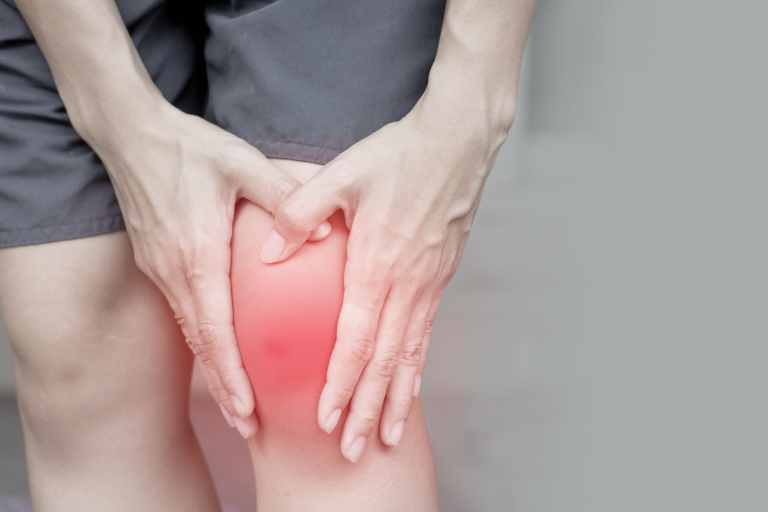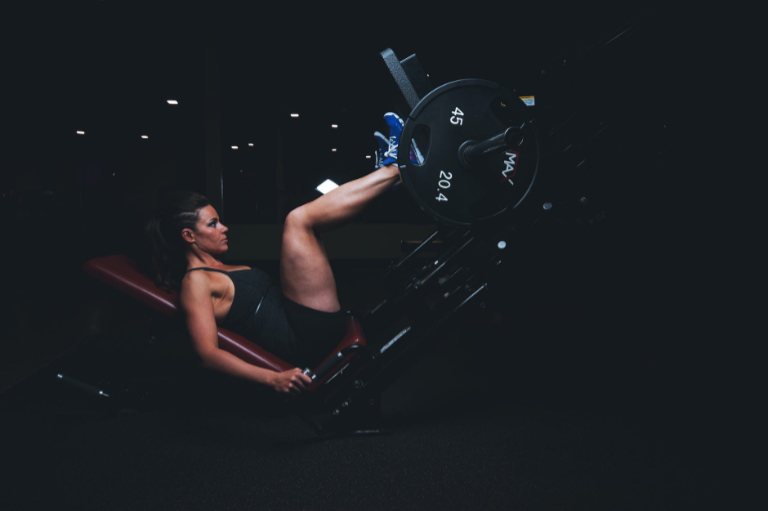In my daily practice, I get a lot of patients coming to see me for all types of leg injuries and pains, e.g. sciatica, arthritis, ankle sprain, fracture, you name it… Of all these, there’s one sub-group of patients whose pain intrigues me the most.
Although they don’t have any recent accident or trauma, i.e. no fracture, sprain, strain, twisting, or anything like that at all, their feet, knees, or hips can spontaneously hurt so much that renders running, walking or jumping incapable.
Sometimes the pain comes after certain mileage, but sometimes it haunts us out of nowhere, typically, when first stepping out of bed in the morning.
The pain is searing sharp and intense, which can be noticed in either one or both legs. It feels somewhat like having a thorn poking at the heel, a twisting knife in the knee, a hot throbbing surge of prickle in the buttock, or a jammed cog-in-the-wheel feeling at any joint.
With some luck, one might get temporary relief after resting for a couple of days. But this cannot be consistently replicated. And relapse is almost guaranteed in most cases without proper treatment. When the pain is really bad, limping is commonly seen. By the time there’s swelling and redness, it spells DEEP TROUBLE.
Collectively, they are called overuse injuries, which encompasses tendonitis, fasciitis, bursitis, or recurrent muscle strain. Depending on where it hurts in the leg, they are crowned with specific nomenclatures like: Achilles Tendonitis, Plantar Fasciitis, Shin Splint, ITB Syndrome, Jumper’s Knee, Piriformis Syndrome, etc.
I have vested interest in treating these conditions, because I used to suffer from them since teenage years. My intimate relationship with them got me motivated to find cheapest, safest & the most efficient treatment to end this agonizing ordeal.
For something to qualify as a truly working solution, at the very least, it has to offer concrete answers with a great degree of certainty to the following questions:
1) What conditions does It work best?
2) To what degree it works?
3) How long does it take to work?
4) How long lasting is the effect?
5) If it doesn’t work, how soon can we tell
so that we can “jump ship” to switch for other options in time?
6) Any adverse side effects?
Unfortunately, virtually all mainstream “evidence-based” treatment modalities fail to come up with acceptable answers to these questions.
For the past 20 years, I’ve witnessed the ebbs and flows of research efforts and shift in trends of clinical practice. I’ve tried numerous treatments both on myself and my patients. But to my dismay, I haven’t found much promising aid on the horizon for our rescue.
It wasn’t until a decade ago, over a series of serendipitous encounter, when I incidentally experienced some immediate and long-lasting recovery for my age-old injuries, which led to my founding of the treatment system now shared with you in this book for this specific injury category.
Quite often, people think of Leg Overuse Injuries as something wrong in the legs from “bottom-up”. After all, the leg only hurts when it touch-down on the ground, right?
However, my daily clinical experience has proven this theory a huge fallacy.
Over countless occasions have I witnessed “near-miraculous”
recovery from tendonitis or fasciitis, without doing a single thing on the leg.
Upon extensive deliberation and examination, I observed an interesting and
consistent pattern emerged: that the course of a leg injury recovery can be
predictably manipulated by doing certain specific things remotely distant from
painful sites.
Imagine you have an invisible string that you can pull a puppet from afar effortlessly. How good would it be?
And imagine you have the freedom to choose to improve or deteriorate your leg symptoms by performing particular body movements, all without stressing the legs.
Would this be a game changer?
My practice has been transformed as a result of this profound discovery, and to the extent that I literally purposefully avoid touching my patients legs for leg pain treatment.

Don’t get me wrong. I still have to examine their legs. I’d perform my due diligence with
leg examination during initial assessment.
But once we’ve confirmed it’s a leg overuse disorder, then no manual techniques, leg training, or even electro-physical agents is necessary to be applied on the legs for speedy recovery.
In fact, we find it’s actually slower to heal if we get myopically obsessed with where the
pain exists. Such revolution certainly did not come overnight. It was the end-result of continued experimentation spanning well over a decade.
In case you find this “leg-free” approach to treating leg overuse injury counter-intuitive or disconcerting, let’s consider this: What does a detective walking fresh into a murder crime scene typically do? Do they tamper with the crime scene, touch everything they want and turn every stone?
Or do they exercise strict discipline, take full records of the crime scene, while avoiding physical contact with evidence as much as possible? You see where I’m going?
When it comes to healthcare, we’d better put our Sherlock Holmes hat on instead of making hasty decisions based on default assumption. Beware that pain is just a signal, a by-product, an end-result.
Very rarely pain is the real thing. For instances, angina gives off pain to the left arm. Kidney stone feels like sharp back pain. Rib cage pain feels like stomach ache. So, next time when you have leg pain, think twice before attempting to change anything in the leg
to fix it.
Here’s my reasoning in a nutshell:
1) Basic Physics: Think about Moment Arm. Forces can be multiplied over a distance. Just like earthquakes seldom kill at its epic centre, but its ensuing tsunami slaughters communities in tens of thousands across continents.
When human body is out of balance, a build-up of strain & pressure in the extremities can get our limbs inflamed, as commonly seen in tennis elbow, plantar fasciitis, etc.
2) True Fix: Every so often, a symptomatic treatment can be mistaken as an authentic cure. To verify if a treatment is a true cure or not, test it and counter-test it. Our book offers you a way to methodically trace for the source of your overuse leg injury.
3) Fast Acting: Conventional exercise programs for tendinitis, which take 12 weeks or more to complete, just do not offer enough of this.
I’m not sure about you. But I guess I’m not the only one who can’t wait till the end of 3 months to determine if a treatment is working or not. Fortunately, our method typically kicks in within 3-5 days, offering you ample space to consider keep using it or not.
4) Versatility: Unlike those widely publicized heel-drop or eccentric squat exercises, which have limited value for females, in-season athletes, or sedentary folks, our method is applicable for all patients regardless of sex, sport history, pain intensity or location.
5) Comfortable: No gruesome soreness. No post-workout muscle tightness. No heavy weight lifting. There’s virtually no side effect on the legs because the whole point of getting rid of leg overuse is to get away from them.

